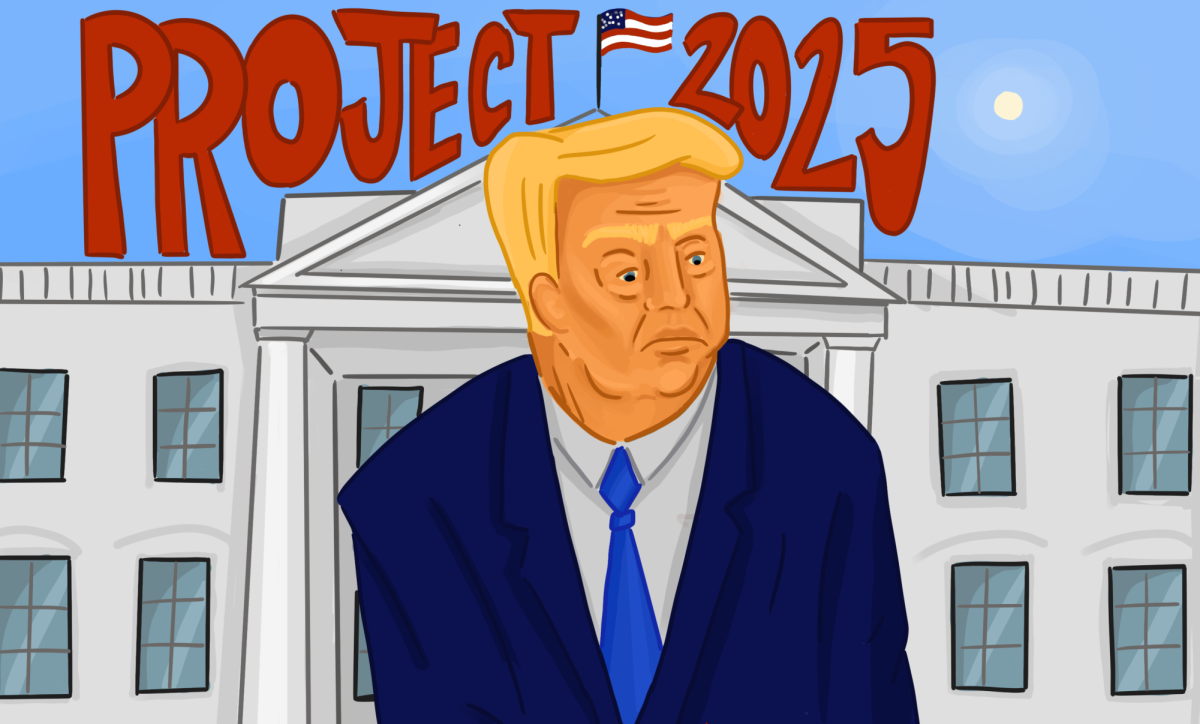As newly re-elected President Donald Trump implements his administration’s policies, many align with the proposals outlined in Project 2025. This initiative, introduced in April 2023 by the conservative think tank “The Heritage Foundation,” was designed for a potential Republican presidency. The plan has strong ties to Trump’s political circle, as many contributors and supporters have connections to Trump’s past administration, 2024 campaign and key allies.
Although Trump has publicly dismissed certain aspects of the plan—calling some proposals “ridiculous and abysmal” — his administration has implemented policies that reflect many of its recommendations (CNN.com). According to CNN, 36 of Trump’s first 53 executive orders mirror aspects of Project 2025.
Environmental Policy
With over 100 pages dedicated to environmental reforms, signaling significant shifts in climate policy. The plan aims to reverse many climate policies put in place by former President Joe Biden. One of these is rolling back Biden’s 2022 “Inflation Reduction Act,” which allocated funding toward combating climate change through clean energy investments and emissions reduction initiatives.(clf.org) The administration argues that these policies place economic burdens on American industries and taxpayers (whitehouse.gov). Due to the rolling back, some Americans believe that this will lower inflation rates.
Project 2025 advocated for increased domestic energy production, particularly through the expansion of oil drilling and the reduction of environmental regulations. In President Trump’s early executive orders, vast areas of Alaska, including the Arctic National Wildlife Refuge, were opened to oil drilling. This directly reflects the project’s recommendations. Additionally, the administration withdrew a pending ban on per- and polyfluoroalkyl substances (PFAS) in drinking water, aligning with the project’s stance on deregulation.
Government Restructuring
President Trump’s administration has initiated mass firing across multiple federal agencies as part of an aggressive government restructuring effort. According to ABC News, 200,000 federal employees, particularly those in probationary periods, were abruptly fired from the agencies such as the Department of Education, Department of Homeland Security and Department of Energy (ABCnews.com). These terminations, carried out without approval from Congress, have drawn significant backlash from labor unions, Democrats and government watchdog groups, with more than 60 lawsuits challenging their legality. The Trump administration has justified the firings as necessary to reduce the size of the government and streamline government operations, similar to Project 2025’s goal of shrinking the federal workforce and increasing presidential control.
The restructuring effort, which also involved Elon Musk’s newly created Department of Government Efficiency, aims to cut up to 10% of the federal workforce. The administration has encouraged voluntary resignations through a “deferred resignation” program, with thousands of employees opting to leave in exchange for extended pay. These efforts are true to key Project 2025 objectives, including restructuring the federal workforce, limiting the influence of federal labor unions and appointing officials aligned with the administration’s policies. The centralization of executive power is a cornerstone of Project 2025’s long-term vision and is seen in the lack of congressional oversight.
Immigration and Deportation Policy
Project 2025 advocated for stricter immigration enforcement, mass deportations and a rollback of asylum protections, aligning closely with President Trump’s second term agenda to use the “expedited removal” program, as well as raids in neighborhoods and workplace (immigrationforum.org). The administration has already begun implementing policies that mirror these proposals, including reinstating mass deportation programs, restricting birthright citizenship and significantly expanding border security measures. Trump’s push to invoke the Insurrection Act to deploy military forces for immigration enforcement aligns with the project’s broader vision of a more aggressive approach to border control.
Trump has begun using Immigration and Customs Enforcement (ICE) to arrest and deport undocumented immigrants. Project 2025 has a goal of fast-tracking deportation efforts. ICE has been deporting immigrants, even without criminal charges (chscommunicator.com).
By mid-February, ICE had detained 41,169 people. They have also detained 16,500 immigrants with no proof of criminal charges (nbcnews.com). Even so, Trump has been frustrated about the slow pace of arrests.
Diversity, Equity and Inclusion Initiatives
Project 2025 calls for the elimination of Diversity, Equity and Inclusion (DEI) programs across federal agencies, arguing that such initiatives promote “woke” ideology. This aligns closely with Trump’s second-term policies, as his administration has already moved to dismantle DEI offices, ban federal funding for DEI training and roll back gender-inclusive policies in government institutions. Executive orders have also targeted the use of race and gender considerations in hiring and education, which is seen in Project 2025’s push to end affirmative action and restore what it describes as “merit-based” systems.
The Trump administration has given schools and universities two weeks to eliminate diversity-related policies or risk losing federal funding (apnews.com). The Education Department’s directive prohibits race-based considerations in admissions, financial aid and hiring, citing the Supreme Court’s 2023 ruling against affirmative action. Colleges are scrambling to assess compliance while facing potential funding cuts.
Gender-Affirming Care for Minors
Trump’s recent executive order aligns with Project 2025 and seeks to limit access to gender-affirming care for minors, particularly treatments for transgender youth. This decision has sparked legal challenges, with orders that prohibit federal agencies from granting access to minors. Many federal agencies are being told to stop relying on guidelines that have been around for decades. President Trump has previously criticized gender-affirming care, calling it “junk science” and recommending health organizations that use scientific evidence to stop relying on it (williamsinstitute.law). The government would be able to put in place laws that make minors “use their binary sex.”
As President Trump moves forward with his second-term agenda, his policies closely reflect many of the proposals outlined in Project 2025. The focus on issues like environmental deregulation, social policy and the dismantling of DEI initiatives further demonstrates a shift toward conservative values. The implementation of policies such as restrictions on gender-affirming care and the reclassification of federal employees has sparked controversy and legal challenges. It is clear that Trump’s administration remains committed to reshaping the government in line with Project 2025’s vision.











